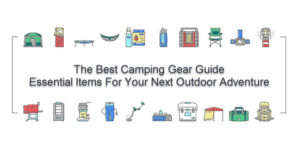Introduction to First Aid Kits:
First aid kits are essential for any emergency situation. They can help you quickly respond to injuries and illnesses until medical professionals arrive. Building your own first aid kit allows you to customize it based on the needs of yourself or your family, ensuring that you have everything necessary in case of an emergency. In this guide, we will cover what should be included in a basic first aid kit, how to customize it, tips for storing and maintaining it, common emergencies and how to use your first aid kit effectively.
What to Include in Your First Aid Kit:
A well-stocked first aid kit should include the following items:
Bandages (various sizes)
Sterile gauze pads
Adhesive tape
Antiseptic wipes
Tweezers
Scissors
Disposable gloves
CPR mouth barrier mask
Pain relievers (acetaminophen, ibuprofen)
Antihistamines (for allergic reactions)
Hydrocortisone cream (for insect bites and rashes)
Eye drops
Instant cold pack
How to Customize Your First Aid Kit:
Your first aid kit should be tailored to meet the specific needs of you and your family. Consider adding additional supplies such as glucose tablets (if someone has diabetes), epinephrine auto-injector (if someone has severe allergies), or prescription medications if needed. If you spend time outdoors, consider including additional supplies like snake bite kits or insect repellent. It’s also important to regularly check the expiration dates of your supplies and replace them when necessary.
Tips for Storing and Maintaining Your First Aid Kit:
Keep your first aid kit easily accessible and in a location where everyone knows where it is. Check the contents periodically to ensure that nothing has expired or been used up. Replace any missing or expired items promptly. Additionally, make sure that the container holding your first aid kit is waterproof and durable enough to withstand rough handling. You may want to keep a smaller version of your first aid kit in your car or bag as well.
Common Emergencies and How to Use Your First Aid Kit:
Some common emergencies that require immediate attention include cuts and scrapes, burns, sprains and strains, broken bones, heart attacks, strokes, and allergic reactions. Depending on the severity of the injury or illness, different steps may need to be taken. For example, if someone is experiencing chest pain, they may need to chew aspirin while waiting for paramedics to arrive. Knowing how to properly use your first aid kit could mean the difference between life and death in some situations.
Conclusion: Building the Ultimate First Aid Kit:
Building your own first aid kit takes time and effort but can provide peace of mind knowing that you are prepared for most emergency situations. By stocking your kit with essentials and customizing it to fit your individual needs, you can feel confident that you have everything necessary to handle unexpected injuries or illnesses. Remember to store and maintain your first aid kit properly so that it remains effective when you need it most.

